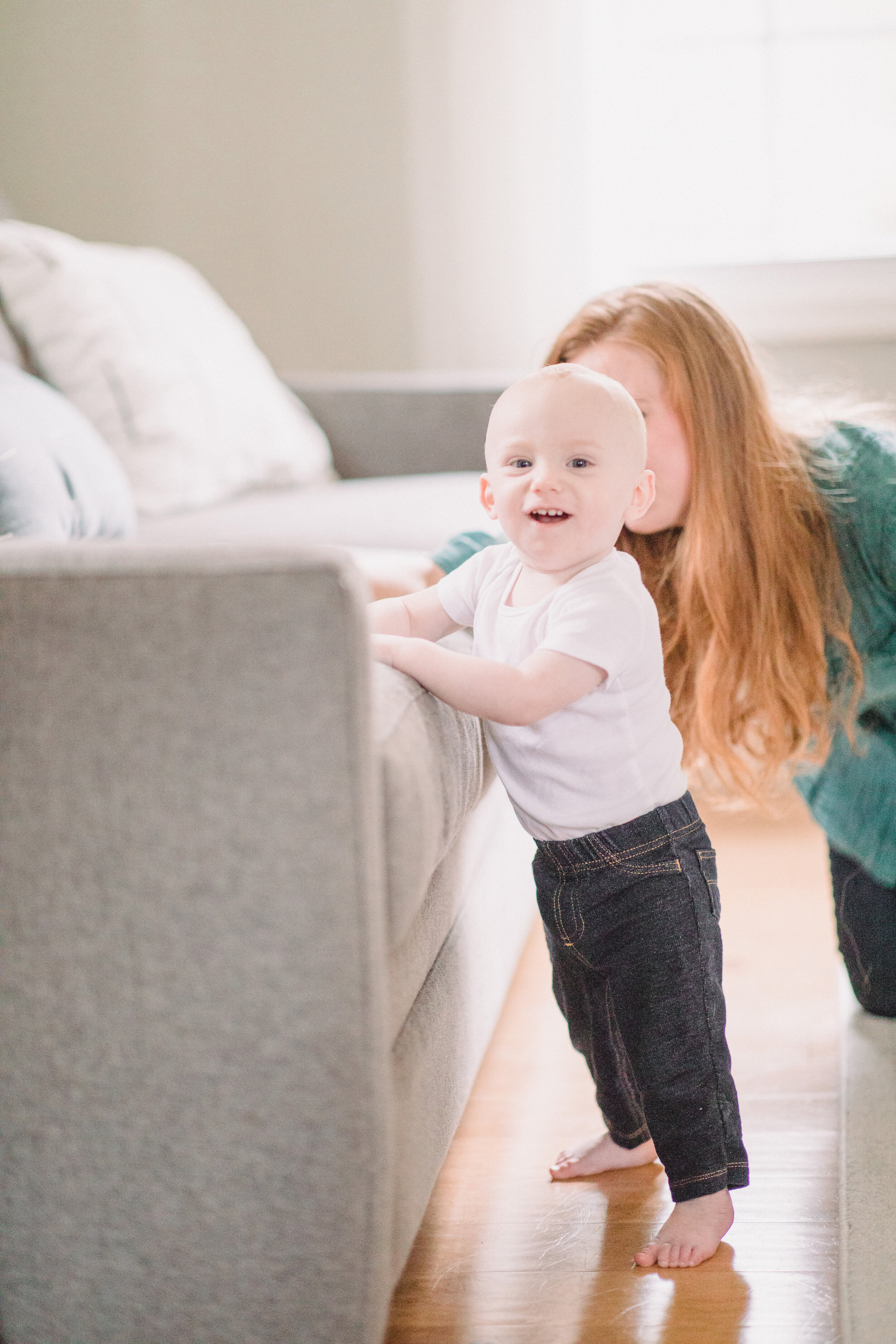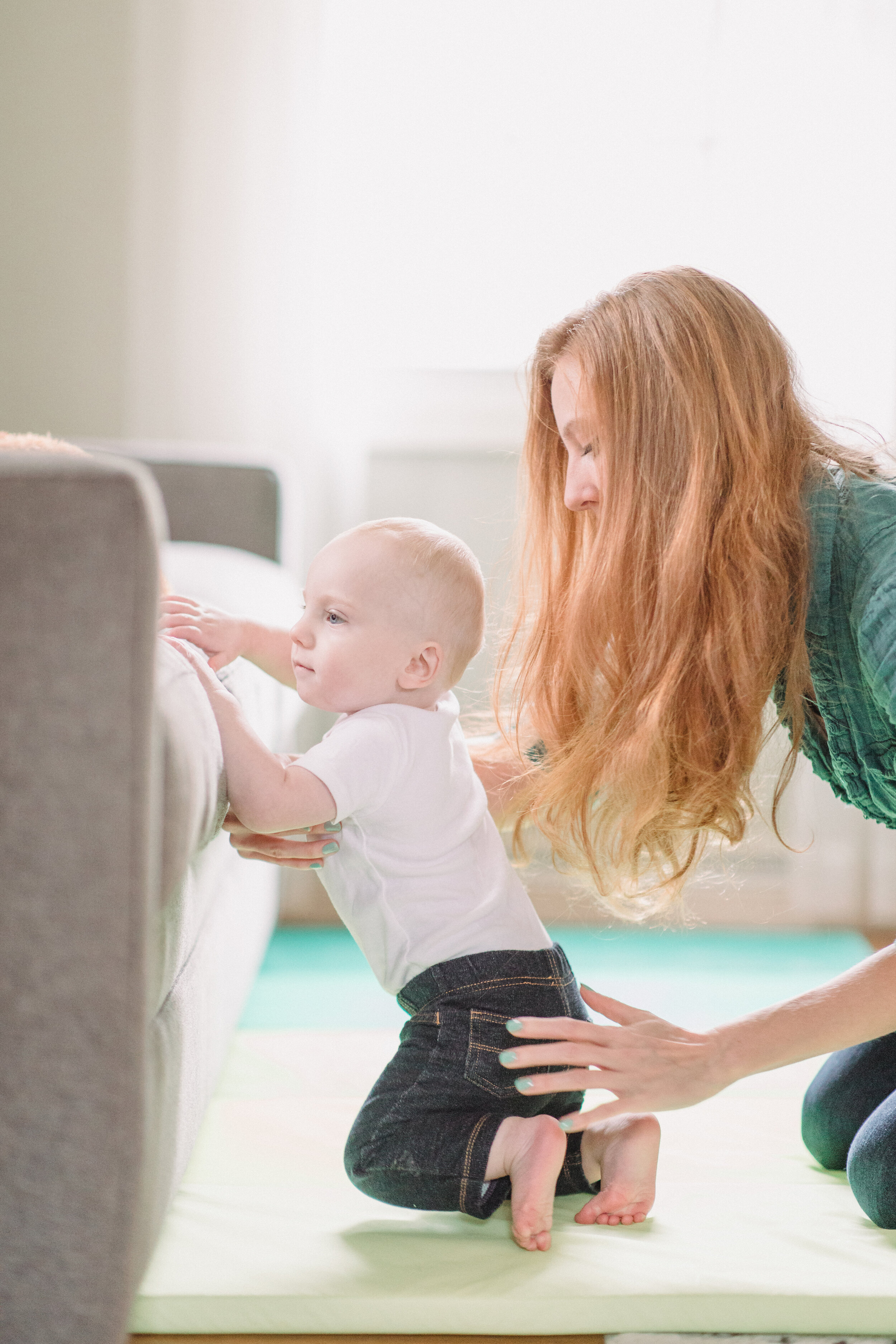How to Encourage Your Baby to Take First Steps
As humans, walking is our most common mode of transportation to get from point A to point B. Walking is a huge milestone, one that most parents anxiously await and joyfully celebrate by calling family and friends or posting on social media. But walking doesn’t develop in a vacuum. All of the motor skills your baby has been working on so far in the first year have been preparing him/her for walking.
One of my most commonly asked questions from parents is, “How do I teach my baby to walk? He seems close!” Without seeing your child, it’s hard to say exactly why he isn’t walking yet, but it is most often because he needs to do a little more strength and endurance work before he is really ready to take those first dynamic steps unsupported- it is a ton of work!
Why proper preparation for walking is important
Babies need to progress through motor skills to master them and then build on them. Strength and endurance gained in tummy time led to coordinated rolling, which led to sitting, and later, crawling. Crawling taught baby how to shift his/her weight and use his/her arms and legs in a reciprocal pattern which is used when walking and swinging the arms. Your baby built on those skills by crawling over things, stepping up at the couch, squatting, and cruising around furniture. All of the hard work baby has been doing this year has been preparing his/her body for a coordinated walking pattern. It might be tempting, but DON’T rush walking! It is important for baby to master the foundational skills for walking to support good balance and coordination later.
How to help baby get ready to walk
If your baby isn’t ready for steps yet, meet him where he is and play in that position a little longer. Both of your hard work will pay off soon! Try not to just place your baby in standing, but help him/her work through the process of moving toward the couch, stepping up into standing, and cruising. Babies learn when they experience movements, and transitional movements like getting from the floor into standing are important ones. (We’re working on videos for you, stay tuned!)
If your baby is getting close to walking, keep reading! We’ve created a list of fun activities to help encourage your baby to develop all of the little pre-walking milestones so he/she will be off in no time.
What baby is working toward
Coordinated steps
Good balance
Ability to move forward, sideways, and step over obstacles
Top 3 positions to prepare baby for walking
Tall kneeling (playing on knees with bum up off of the heels)
Stepping into standing (usually at a couch or holding onto something in front of them)
Cruising (walking sideways while holding onto furniture or wall)
How to prepare baby for first steps
Kneeling to standing: Play at the ottoman, couch or coffee table and help baby step up from kneeling into standing. Place toys up on the couch, just out of baby’s reach to one side and encourage him/her to reach for the toy. The reaching will cause baby to put more weight into the foot on that side (therapy term is weight shift) and step up into standing. Repeat several times to both sides evenly.
Cruising/side-stepping: Play at a mirror, sliding glass door, or refridgerator. Use window clings, window stickers, suction cups or magnets to encourage baby to reach and move side to side once he/she is standing at the mirror or door. Move the items further away as your baby starts to take side steps (cruise). This strengthens the hips and trunk muscles to support walking.
Walking with push toy: If you have one available, use a walker toy (the kind that baby stands behind and pushes like a cart) or substitute a broomstick! Hold the broomstick horizontally in front of baby so he/she has something to hold onto for balance and you can work on the same skills. You face baby and walk backwards as he/she takes steps, keeping the broom handle about 1in lower than baby’s shoulders. If using a walker toy, try weighing it down with a wrist weight on the handle or water bottles/canned goods in the basket. Unweighted carts/walkers tend to get too far ahead of baby as he/she is learning. Slow and controlled is the goal.
I know baby’s first steps are a long awaited milestone, but try not to get discouraged if it is taking baby a bit longer to start walking. Instead, feel confident in how you help baby move during play to strengthen pre-walking skills and know that spending a few more weeks building a solid foundation is important for long term coordination and balance. Try some of the ideas above and see how much stronger baby will become before taking good quality first steps.
Bree
We’re Bree & Jaclyn
Pediatric therapists and moms with a mission to empower you with knowledge to encourage your baby’s development and continue confidently into your parenthood journey.
If you have any questions, please feel free to leave a comment below and we will get back to you. As always, the information we share is meant to provide general education and tips and is not intended as medical advice. If you have a specific question or concern about your child’s development, please speak directly to your child’s doctor or therapist.







